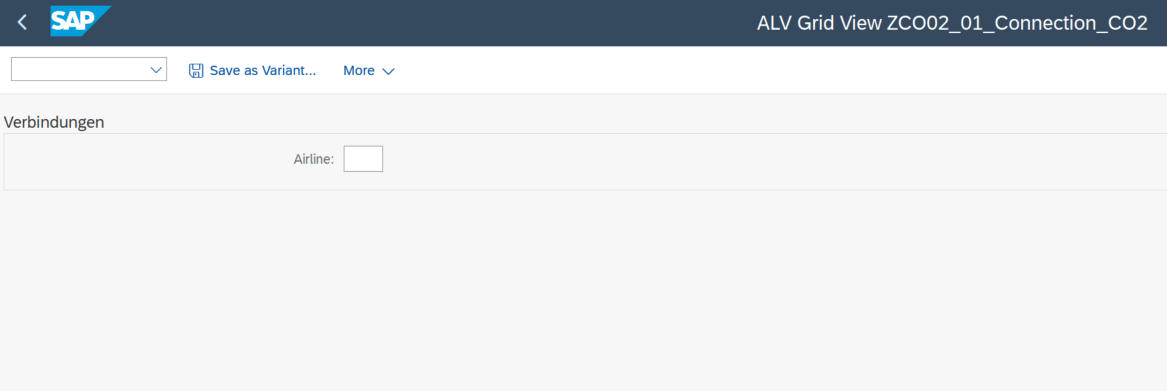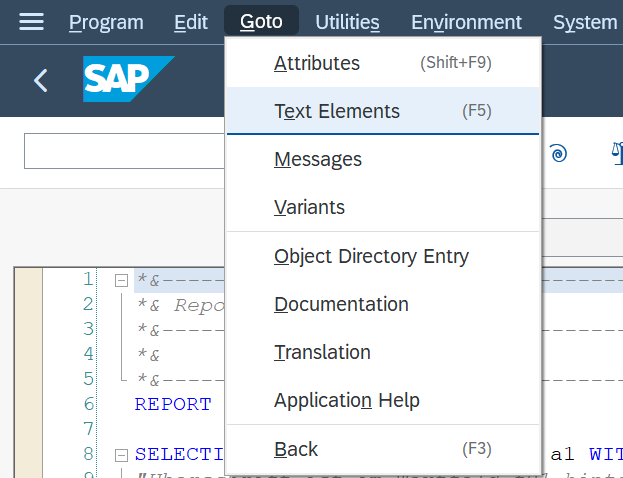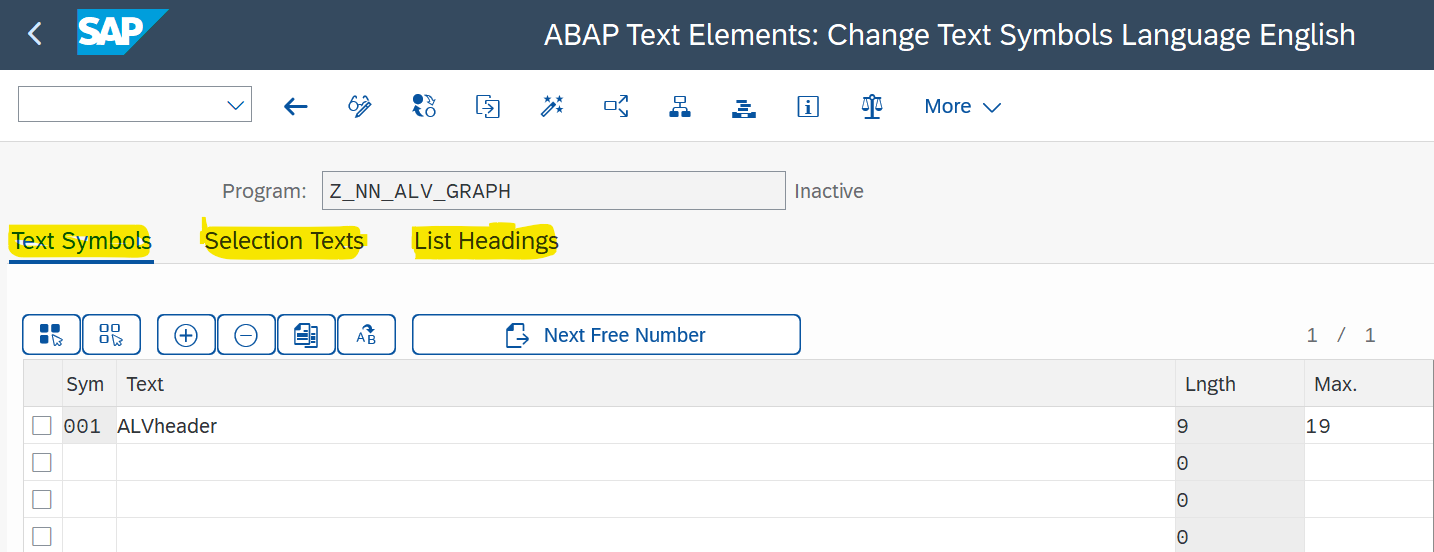ABAP Tutorial
7 ABAP List Views
We are
-
1. create a table we want to output
-
2. create an object variable of type cl_salv_table
-
3. beautifying our (ALV) with optimized column width, list headers, striped patterns, etc.
-
4. let the user sort and filter our ALV
a Capture input parameter and create an output table
First we create a SELECTION-SCREEN to input a parameter:
1 REPORT zco2_01_connections . 2 SELECTION−SCREEN BEGIN OF BLOCK a1 WITH FRAME TITLE TEXT−f01. 3 " Uberschrift ist im Textfeld f01 hinterlegt . 4 PARAMETERS: p_carr TYPE sflight − carrid . 5 SELECTION−SCREEN END OF BLOCK a1.
The input SELECTION-SCREEN looks as follows:
Then we create the table lt_ausgabe which we want to output.
1 SELECT ∗
2 FROM zco2_01_connection_co2
3 WHERE Anbieter = @p_carr
4 INTO TABLE @DATA(lt_ausgabe).
5
6 IF lt_ausgabe IS INITIAL .
7 Message i001 (ZCO2N01).
8 ELSE.
9 \ subsection { Create object of type \ verb | cl_salv_table |}
10
11
b Creating a clsalvtable object
Now we create an object variable of type cl_salv_table.
1 ∗ ∗∗∗∗∗∗∗∗∗∗∗∗∗∗∗∗∗∗∗∗∗∗∗∗∗∗∗∗∗∗∗∗∗∗∗∗∗∗∗∗∗∗∗∗∗∗∗∗∗∗∗∗∗∗∗∗∗∗∗∗∗∗∗∗∗∗ 2 ∗ALV GRID erzeugen 3 ∗ ∗∗∗∗∗∗∗∗∗∗∗∗∗∗∗∗∗∗∗∗∗∗∗∗∗∗∗∗∗∗∗∗∗∗∗∗∗∗∗∗∗∗∗∗∗∗∗∗∗∗∗∗∗∗∗∗∗∗∗∗∗∗∗∗∗∗ 4 5 DATA: lo_salv TYPE REF TO cl_salv_table . 6 ∗ Create the ALV object
On this lo_salv object we can operate all the
c Our very simple ALV grid
We needed to TRY because we need to catch the exception cx_salv_msg.
1 TRY. 2 cl_salv_table => factory ( 3 IMPORTING 4 r_salv_table = lo_salv 5 CHANGING 6 t_table = lt_ausgabe ).
We have created the object, however, we still need to output it withÂĺ
1 lo_salv −> display ( ) .
When copying all the code snippets, do not forget to delete the previous lo_salvâĘŠdisplay ( ) since we insert it at the very end.
The table we output is on line 7 ltausgabe.
d Beautifying our ABAP List View (ALV)
Now we beautify our table.
-
1. We optimize the column width in line 2
-
2. we set a list header (line 3)
-
3. we stripe the results for better legibility (line 4)
-
4. TBD
1 ∗ Basic Settings
2 lo_salv −> get_columns ( )−> set_optimize ( abap_true ) .
3 lo_salv −> get_display_settings ( )−> set_list_header ( ' CO2 Verbrauch ' ) .
4 lo_salv −> get_display_settings ( )−> set_striped_pattern ( abap_true ) .
5 lo_salv −> get_selections ( )−> set_selection_mode ( if_salv_c_selection_mode =>row_column ) .
6
7 "Column headings : technical Name und description
8 LOOP AT lo_salv−> get_columns ( )−> get ( ) ASSIGNING FIELD−SYMBOL(<c>).
9 DATA(o_col) = < c > −r_column.
10 " Set Short Text to empty , so that autosize works for columns
11 o_col −> set_short_text ( || ) .
12 " Set medium Text to empty , so that autosize works for columns
13 o_col −> set_medium_text ( || ) .
14 DATA(lv_columnname) = o_col −> get_columnname ( ) .
15 TRANSLATE lv_columnname TO LOWER CASE.
16 TRANSLATE lv_columnname(1) TO UPPER CASE.
17 o_col −> set_long_text ( |{ lv_columnname }| ) .
18 ENDLOOP.
This is how everything looks like
If you look closely, above the results we have icons, allowing us to
-
1. select all
-
2. deselect all
-
3. sort ascending
-
4. sort descending
-
5. filter
our results.
e Filter and Sorting the ALV
Here we implement the feature to filter and sort the results.
1 lo_salv −> get_functions ( )−> set_filter ( ) . 2 lo_salv −> get_functions ( )−> set_sort_asc ( ). 3 lo_salv −> get_functions ( )−> set_sort_desc ( ). 4 lo_salv −> display ( ) .
Just to be complete, we need close our TRY and ENDIF.
1 CATCH cx_salv_msg. 2 ENDTRY. 3 ENDIF.
f Naming the headers of ALV grids and descriptions of selection parameters
How to get the header ALVheader and the parameter Lagernummer (instead of the uglily named p_lagnum) into our ALV Grid.
In transaction SE38 click GOTO->Text Element.
The Text element Screen opens and you can edit the Selection Texts and List Headings (highlighted in yellow).






